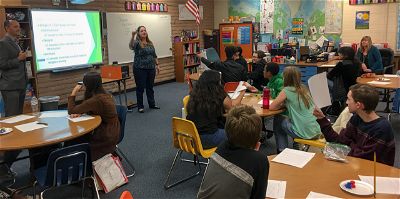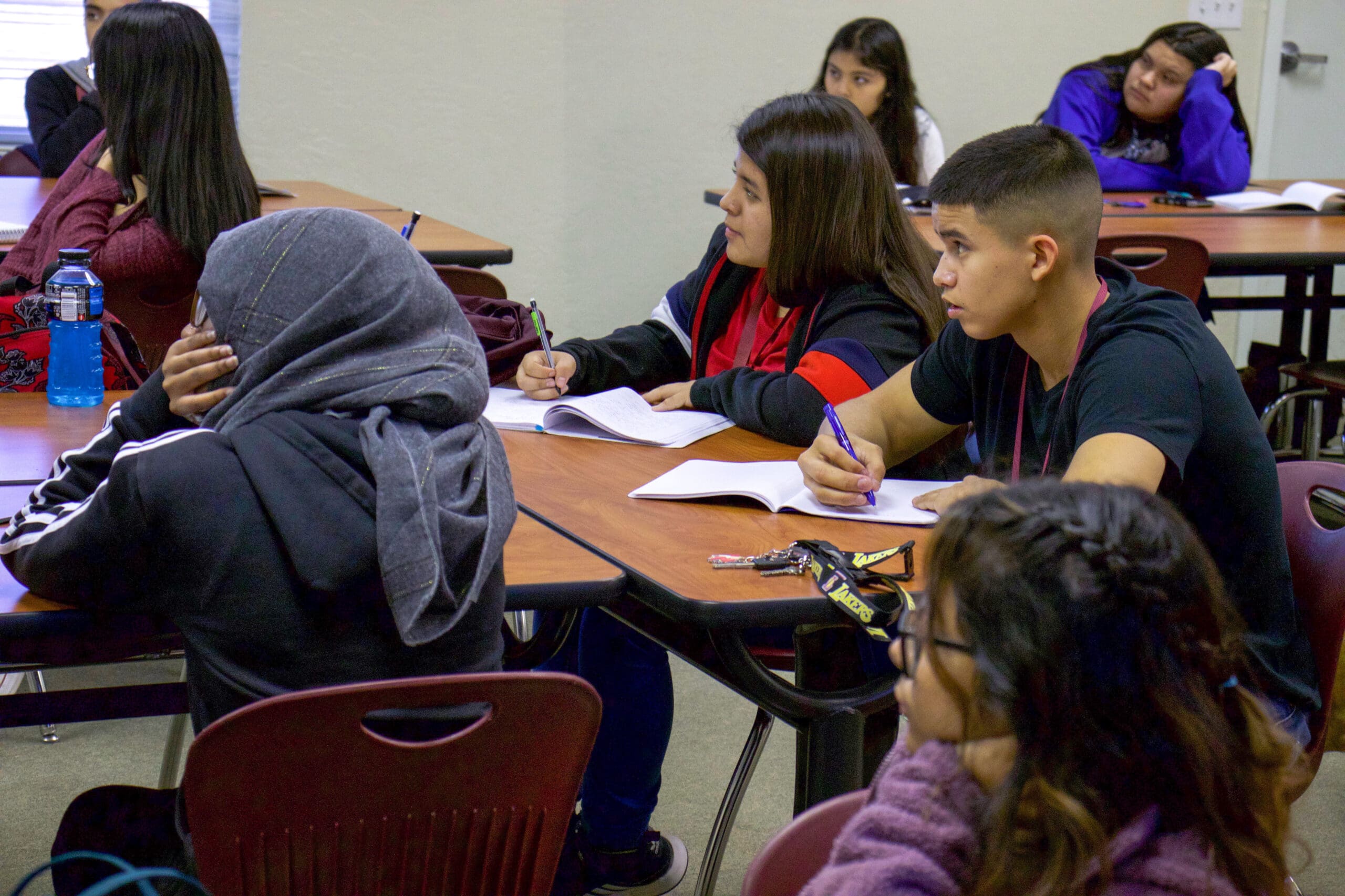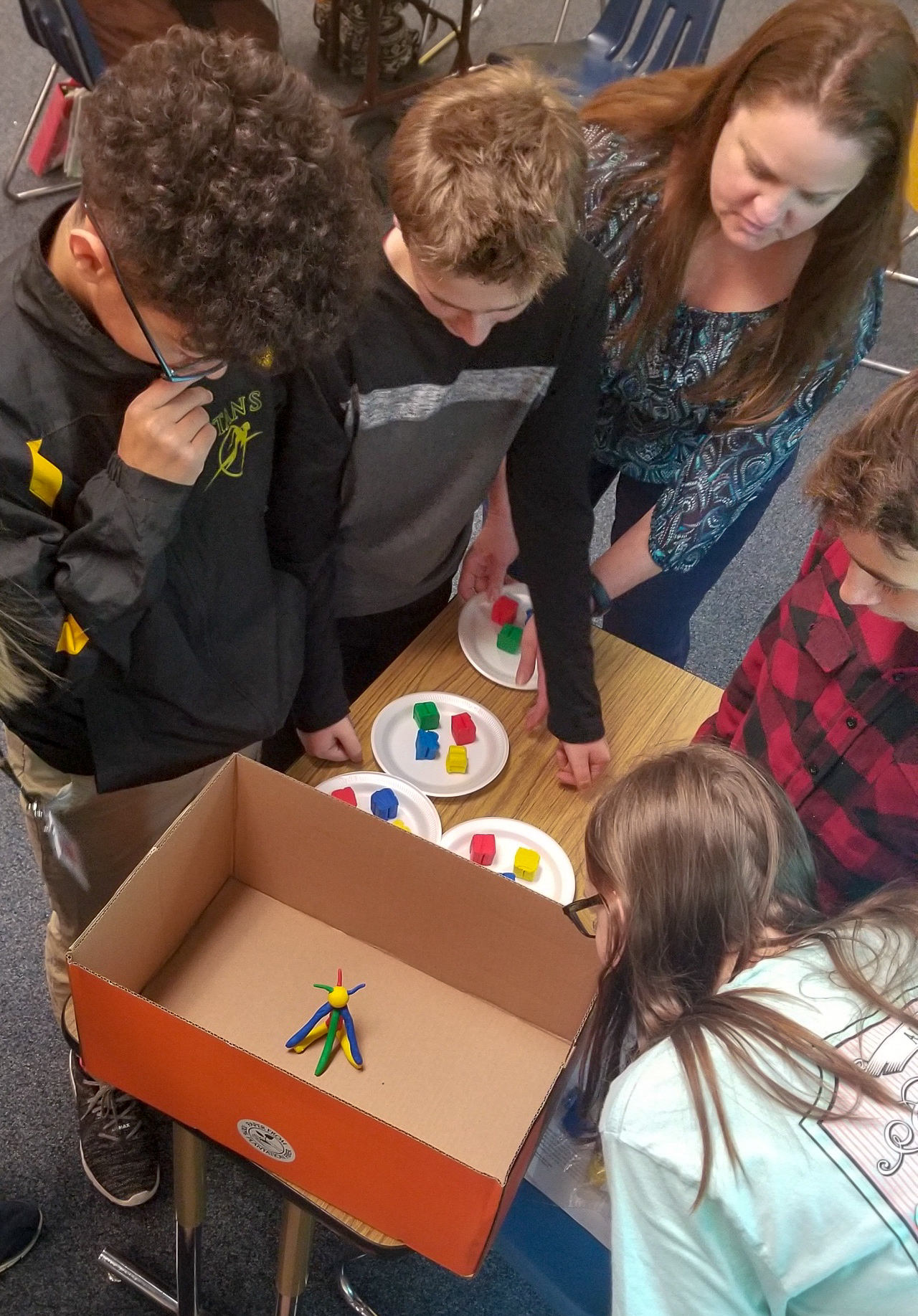
Arizona Students Get a Jump on Career Education with ‘Possible Futures’
March 5, 2019
At a Glance
What do you want to be when you grow up? Some Arizona students are getting ready to answer that question and learning what it takes to get there thanks to a new JFF curriculum.
At summer camp, 13-year-old Tom falls off his skateboard, hits his head, and becomes unconscious. This moment starts a chain reaction for Tom, and he will be treated by many health care professionals—from first responders and paramedics, to emergency room doctors and x-ray technicians, to physical and occupational therapists, and more.
This scenario is one example of how middle and high school students in Arizona are learning about careers through a new JFF initiative. Students put themselves in the shoes of each health care professional Tom interacts with on his journey to recovery, allowing them to learn what it takes to get and work in those jobs.
If the kids take this opportunity, they will have the hard and soft skills to do anything they want to do.
Linda LaFontain, AAEC South Mountain principal
Arizona Leads the Way
Arizona is partnering with JFF to chart a path that brings career exploration and preparation into the classroom, where the career journey really begins.
The state, along with California, is piloting JFF’s new Possible Futures curriculum. It encourages students to explore their strengths and interests in connection with real-world educational and career opportunities. The curriculum helps students learn who they are, who they want to be, and what they need to do to reach their potential.
There is real opportunity to reshape the way we educate young people to think about and prepare for their future.
Sybil Francis, president and CEO, Center for the Future of Arizona
In Arizona, as in much of the country, there are not enough workers who have the credentials and skills to meet employer needs and fill available jobs. The state’s industry and educational leaders are working together to create new opportunities for Arizona’s young talent to gain professional skills and workplace knowledge while still in school to better inform their long-term career choices. With its mission to bring Arizonans together to build a bright future for the state, the Center for the Future of Arizona (CFA) is an important partner in this work together with JFF.
“Rapid innovation is pushing education and workforce systems to the point of convergence and there is real opportunity to reshape the way we educate young people to think about and prepare for their future,” says Sybil Francis, president and CEO for CFA.

Possible Futures Classroom at AAEC Early College High School
“There is a critical need for students to have a firm understanding of the world of work, as well as the career pathways and opportunities that lay ahead,” says Francis. “And teachers can play an instrumental role in this introduction, particularly in knowing and sharing the career opportunities within their regions to help students make good educational choices as they move into high school and postsecondary training.”
This is especially important as rapid shifts in business and the workforce make the route to a career more complex than ever. Most young people in the United States, especially those from low-income families, don’t have access to the resources they need to make informed choices about their own educational and career paths. With dramatic changes in the labor landscape, parents and teachers rarely have the tools or training to help students understand labor market opportunities or to prepare them to enter the workforce of the future.
“Career literacy should be thought of as a pillar of every student’s educational experience,” Francis says. “It’s something that, frankly, many schools have not focused on because of lack of resources or support.”
Arizona’s work with JFF is part of a systemwide change to address this issue.
Careers in the Classroom
Arizona is piloting Possible Futures in select districts and charter schools. Two of the first schools in the state to implement the career-focused curriculum are AAEC Early College High School, South Mountain campus, a charter school in Phoenix, and Cross Middle School, a public school in Tucson’s Amphitheater K-12 district.
Students and faculty at both schools have embraced the curriculum.
When they graduate, they’ll have tried three different industry areas and know what they do like—and more importantly, what they don’t like.
Kevin Norris, teacher at AAEC
AAEC South Mountain Principal Linda LaFontain is committed to the program. “If the kids take this opportunity, they will have the hard and soft skills to do anything they want to do,” she says.
Career exploration is a fulcrum of the Possible Futures model. Using this curriculum, teachers learn about industry needs and how to align classroom education and career exploration with those needs. Students learn how to identify careers as well as the routes to enter them through activities like Tom’s health care scenario. This ultimately fosters young people’s future success in the workforce and leads to a more sustainable talent pipeline to support the growth of industry.
Kevin Norris, an agriculture teacher at AAEC and the leader of his school’s Possible Futures freshman cohort, says the curriculum can help students save time and money by honing their interests and better tailoring their education. “We’re hopeful that when they graduate, they’ll have tried three different industry areas and know what they do like—and more importantly, what they don’t like—so they’re not spending time to get a certification or degree that doesn’t suit what they want to do.”
The Curriculum
The curriculum is designed so that students work together through content-focused group activities, games, and discussions. “You make collaboration part of your classroom culture,” says Lisa DaDeppo, a seventh and eighth grade teacher at Cross Middle School. “You make the idea that there is no opt-out for students. Participation is the expectation. You have to be part of this class, it’s an active class.”
I think all students would benefit from taking this class. I just really believe that having this curriculum in place for all kids is very important.
Tassi Call, director of 21st century education at Amphitheater Public Schools
The Possible Futures curriculum has three units: STEMploration, Skills for Success, and Lenses on the Future. Each unit specializes in a different area of expertise for students to explore career options and develop a robust skillset. STEMploration covers technical skills and knowledge in STEM fields like health science and engineering. Through the Skills for Success unit, students develop essential 21st century skills, such as collaboration and communication. Lenses on the Future helps students understand how to positively contribute to their community.
“I think all students would benefit from taking this class,” says Tassi Call, the director of 21st century education at Amphitheater Public Schools. “I just really believe that having this curriculum in place for all kids is very important.”
Some modules within the STEMploration and Skills for Success units are available now. The full Possible Futures curriculum will be available on JFF’s website in 2020.

Possible Futures Classroom at Cross Middle School, Amphitheater Public Schools, in Tucson
Arizona joins Long Beach, California, in piloting the Possible Futures curriculum as members of JFF’s national Pathways to Prosperity Network, which aims to ensure that young people complete high school, attain postsecondary credentials with currency in the labor market, and launch careers in high-demand, high-wage fields while leaving open the prospect of further education.
Thank you to the Center for the Future of Arizona for making this piece possible. CFA leads Arizona’s work with the Pathways to Prosperity Network.
Related Content

Possible Futures
JFF’s Possible Futures prepares learners in grades 6 through 10 for the future. Access and exposure to productive, family-supporting work play a critical role in our lives. However, as the labor market changes, fewer educators…

Career and College Exploration Experiences: Planning for Success
This guide offers detailed information and resources to help you provide middle and high school students with opportunities to explore their options for the future through Career and College Exploration Experiences. This guide offers detailed…

A Career-Oriented Summer: Planning Your Summer Bridge Program
This guide offers valuable resources to help you develop a comprehensive summer bridge program that supports students as they transition into high school. This guide offers valuable resources to help you develop a comprehensive summer…

Pathways to Prosperity
We are boldly reimagining how U.S. education and workforce systems meet state and regional talent needs and prepare young people for careers. We are boldly reimagining how U.S. education and workforce systems meet state and…
